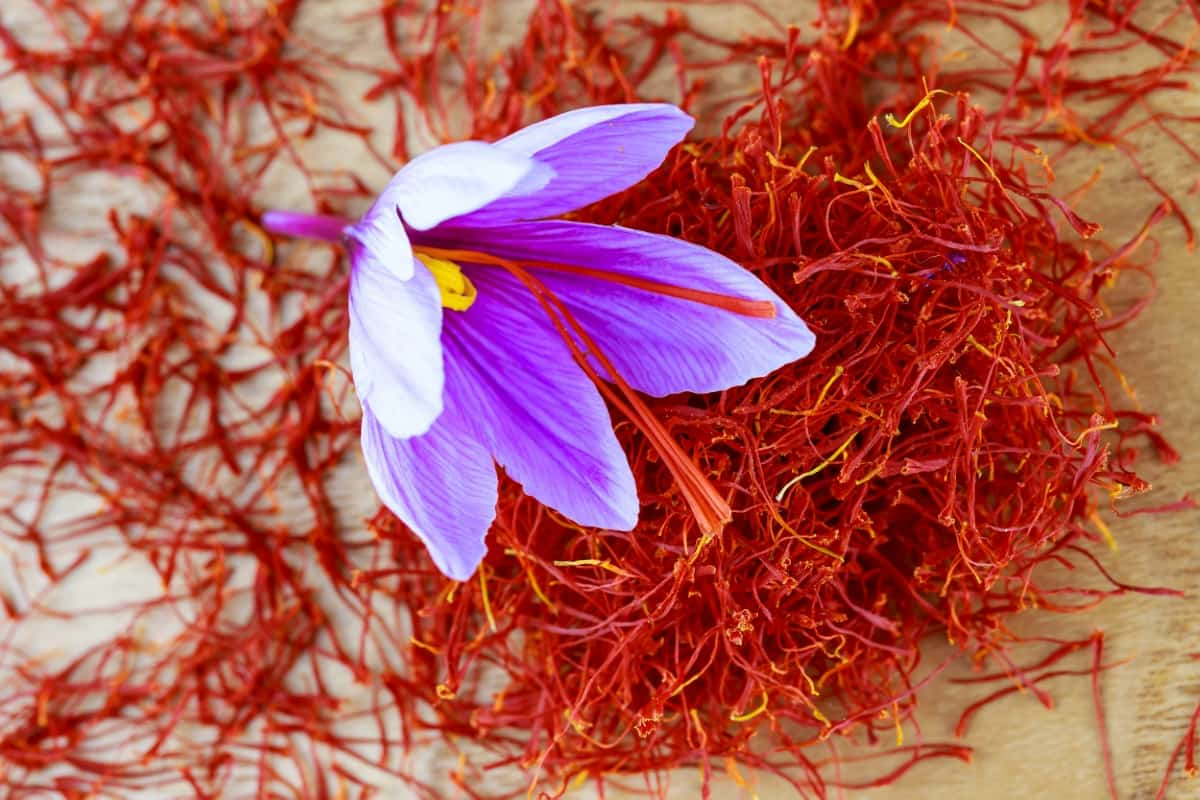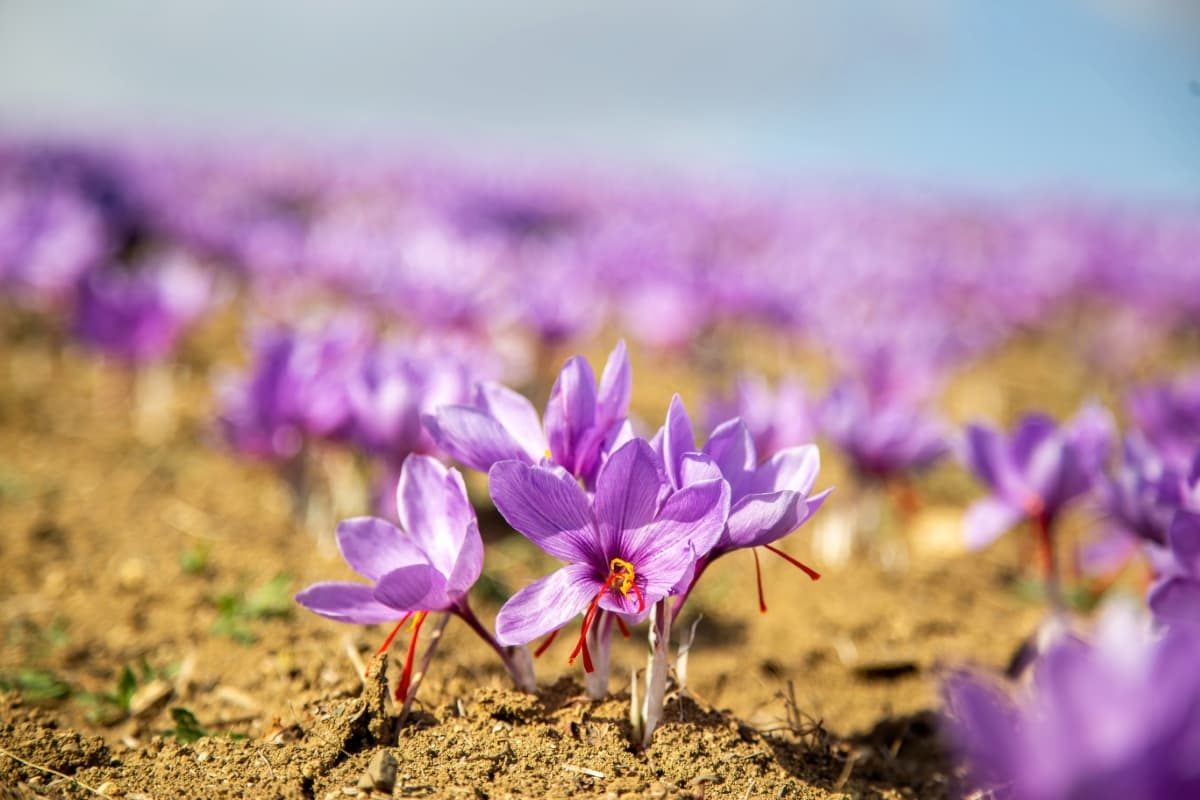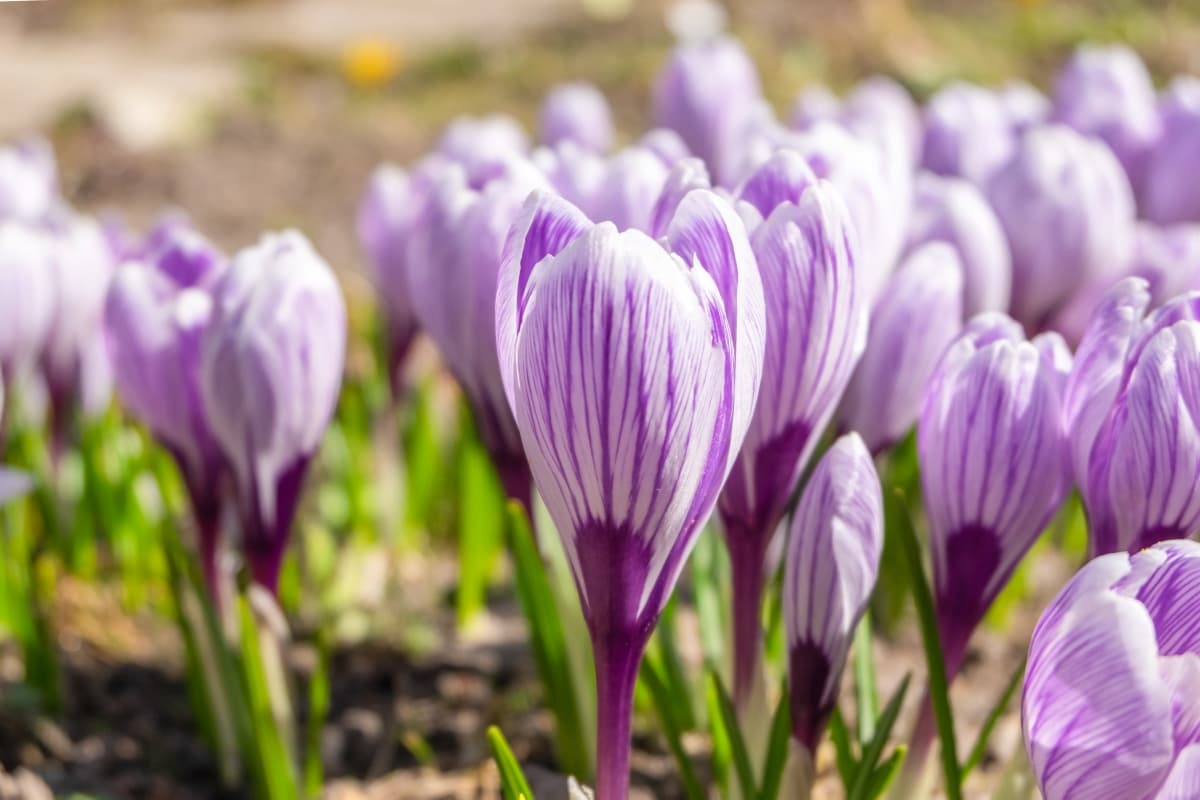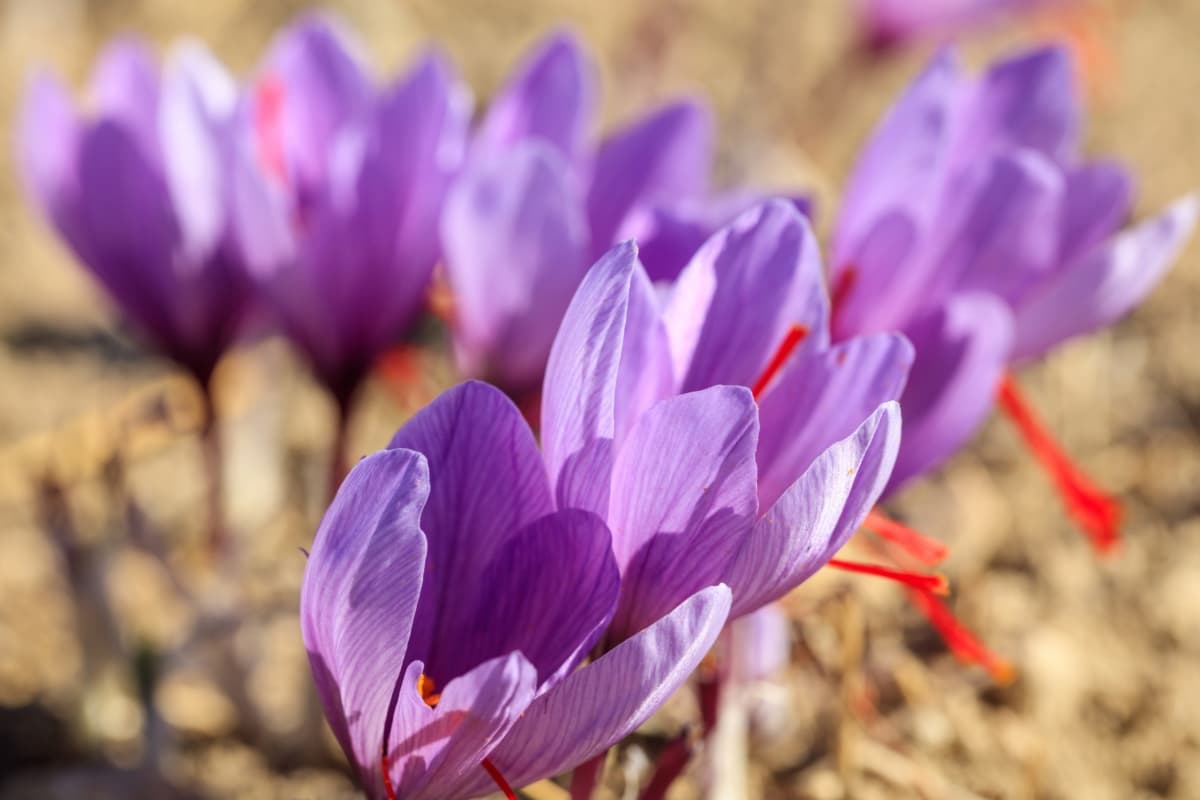Soil and climate requirements play a crucial role in Saffron farming. Saffron is a highly valued spice derived from the Crocus sativus plant. It requires specific soil conditions and climates to thrive and produce its vibrant flowers. This precious spice, derived from the vibrant purple crocus flowers, has been cherished for centuries for its unique flavor and medicinal properties. The right soil pH levels are crucial for successful Saffron farming.

Soil and Climate Requirements for Saffron
Soil pH Levels for Saffron Farming
Saffron farming requires careful attention to the soil pH levels. The ideal pH range for Saffron cultivation is between 6.8 and 7.8. Maintaining this pH level is crucial for the growth and development of Saffron plants. A pH level outside of the recommended range can lead to poor growth and yield of Saffron flowers.
To ensure optimal conditions for your Saffron crop, it’s advisable to conduct a soil test before planting. This will provide valuable information about your soil’s current pH level and help you make informed decisions about any required amendments.
Optimal Soil Type for Saffron Cultivation
When it comes to Saffron cultivation, choosing the right soil type is crucial for optimal growth and yield. The ideal soil for Saffron cultivation should have excellent drainage properties to prevent waterlogging, as the bulbs are prone to rot in wet conditions. Sandy loam or well-draining clay soils are considered suitable for Saffron farming.
Remember that each region may have specific requirements when it comes to optimal soil type for Saffron cultivation due to variations in climate and environmental factors. It’s always best practice to consult local experts or agricultural extension services for guidance tailored specifically to your area.
Understanding Drainage Requirements for Saffron Crocus
Proper drainage is important for the healthy growth and development of these delicate plants. The roots of Saffron crocus are susceptible to waterlogging, which can be affected by root rot and eventually kill the plant. It is important to choose a well-drained soil type. In addition to selecting an appropriate soil type, proper irrigation practices should be implemented. Overwatering can impede drainage and increase the likelihood of waterlogged conditions. Irrigation should be done sparingly, ensuring that only enough moisture reaches the plants without saturating the soil excessively.
Temperature Conditions for Saffron Growth
This delicate spice thrives in moderate climates with distinct seasons. Saffron bulbs require a period of dormancy during winter when temperatures drop below freezing. This dormancy is necessary for the bulb to produce flowers in the following spring. During the growing season, Saffron plants prefer temperatures ranging from 15°C to 20°C. These mild temperatures allow for optimal growth and flower production. Maintaining an ideal temperature range throughout different stages of Saffron growth is vital for maximizing yields and ensuring high-quality spice production.
In case you missed it: How to Create a Saffron Farming Business Plan: From Cultivation to Marketing

Sunlight and Shade Considerations for Saffron Crocus
These delicate flowers require a balance of both to thrive and produce high-quality Saffron strands. Saffron plants need ample sunlight exposure for their growth and development. They should ideally receive full sun for at least 6-8 hours a day. Partial shade is also beneficial during certain stages of Saffron crocus growth.
During dormancy periods in summer, providing some shade helps prevent excessive drying out of bulbs due to intense heat. Additionally, filtered or dappled sunlight is preferable for young shoots emerging from dormant corms in early spring. The gentle touch of sunlight through light tree cover or netting provides adequate warmth without overwhelming tender sprouts.
Moisture Needs of Saffron Crocus
While this plant is known for its tolerance to drought conditions, it does require adequate moisture during specific stages of its lifecycle. During the Saffron growing season, which typically begins in autumn, Saffron crocus requires moderate to high levels of moisture. This helps stimulate bulb growth and ensures healthy flower production.
Wind Tolerance of Saffron Plants
Saffron crocus bulbs are delicate and can be easily damaged by strong winds. Therefore, finding a location with minimal wind exposure is important. Strong gusts of wind can cause the delicate flowers and leaves of the Saffron plant to become damaged or even uprooted. This not only affects the overall health and growth of the plant but also reduces its ability to produce high-quality Saffron threads.
To protect your Saffron crop from wind damage, planting in a sheltered area or using protective structures such as fences or windbreaks can be beneficial. By selecting a location with moderate winds or implementing appropriate protection measures, you can ensure that your Saffron plants thrive in an environment conducive to their growth and productivity.
Altitude and Elevation Considerations for Saffron Farming
The unique climate conditions found at different altitudes can greatly affect the Saffron plant growth and development. At higher altitudes, where temperatures are cooler, Saffron cultivation becomes more challenging. The cold weather can delay or even inhibit the blooming process, resulting in lower yields.
On the other hand, lower elevations with warmer temperatures can accelerate the flowering period. Saffron thrives best at moderate elevations ranging from 600 to 1800 meters above sea level. This range provides an ideal balance between temperature and sunlight exposure for optimal plant growth.
Soil Fertility and Nutrient Requirements for Saffron
To achieve optimal Saffron production, selecting the right soil and ensuring its fertility is of paramount importance. One crucial aspect to consider is the organic matter content in the soil. Adding organic amendments can significantly improve soil fertility by enhancing nutrient levels and promoting microbial activity. Saffron plants require a balanced supply of essential nutrients for healthy growth and flower production.
In case you missed it: Project Report of 1-Acre Saffron Farming: Production Cost and Profit Analysis, Cultivation Economics

Prioritize providing sufficient amounts of nitrogen (N), phosphorus (P), potassium (K), and magnesium (Mg) through appropriate fertilization practices. In addition to macro-nutrients, micronutrients like iron (Fe), manganese (Mn), zinc (Zn), copper (Cu), and molybdenum (Mo) also play crucial roles in Saffron cultivation. Ensuring their availability through proper supplementation helps maintain plant health and maximize yield potential.
Microclimate Factors Affecting Saffron Cultivation
The unique combination of temperature, humidity, sunlight, and rainfall can greatly influence the growth and yield of Saffron flowers. Temperature is one of the key factors that affect Saffron cultivation. Humidity is another important factor to consider when cultivating Saffron. High humidity range can lead to fungal diseases and the rotting of corms (the underground bulb-like structures where Saffron grows).
On the other hand, low humidity levels can result in dehydration and reduced flower production. Sunlight is essential for photosynthesis and flower formation in Saffron plants. They require 6-8 hours of direct sunlight every day during their growing season. Rainfall also plays a significant role in Saffron cultivation.
In addition to these factors, wind speed should also be taken into consideration, as strong winds can damage fragile Saffron flowers. To optimize microclimatic conditions for the successful cultivation of this precious spice, it’s important to choose a location with moderate temperatures, well-drained soil, and adequate sunlight exposure throughout the day while protecting plants from strong winds.
Frequently Asked Questions About Soil and Climate Requirements for Saffron
Can Saffron Be Grown in Clayey or Heavy Soils?
While Saffron can tolerate slightly heavier soils, clayey or heavy soils retain excessive moisture, which can lead to bulb rotting. It’s better to amend such soils with organic matter like compost or sand for improved drainage.
Does Saffron Require Acidic or Alkaline Soil?
Saffron prefers neutral to slightly alkaline soil conditions. Acidic soils should be adjusted using lime before planting.
How Much Sunlight Does Saffron Need?
Saffron needs plenty of full sun exposure (at least six hours per day) throughout its growing season from autumn to early spring.
Do I Need to Protect My Crop from Extreme Weather Conditions?
Yes. Saffron plants are sensitive to strong winds, hailstorms, and heavy rains. Providing protective measures like windbreaks or shelters can help safeguard your crop against such unfavorable weather events.
In case you missed it: Frequently Asked Questions About Saffron Farming

Conclusion
Saffron farming holds immense importance in the agricultural industry. These soil and climate requirements provide numerous benefits for Saffron cultivation, making it a lucrative and sustainable endeavor. Additionally, the type of soil plays a vital role in Saffron cultivation. Well-drained soils are ideal as they prevent waterlogging and root rot, which can be detrimental to plant health.
- Feed Your Flock for Less: Top 10 Tips to Save on Chicken Feed
- Ultimate Guide to Ossabaw Island Hog: Breeding, Raising, Diet, and Care
- Hatching Answers: The Top 10 Reasons Your Chickens Aren’t Laying Eggs
- Eggs and Economics: Breaking Down the Cost of Raising Backyard Chickens
- Defend Your Greens: Proven Methods to Keep Iguanas Out of Your Garden
- Ultimate Guide to Cinnamon Queen Chicken: A Comprehensive Guide for Beginners
- Ultimate Guide to California Tan Chicken: Breeding, Raising, Diet, Egg-Production and Care
- Ultimate Guide to Marsh Daisy Chicken: Breeding, Raising, Diet, and Care
- 10 Types of Chicken Farming Businesses You Can Start for Profits